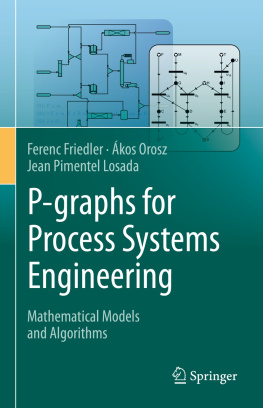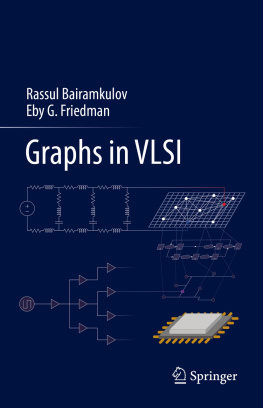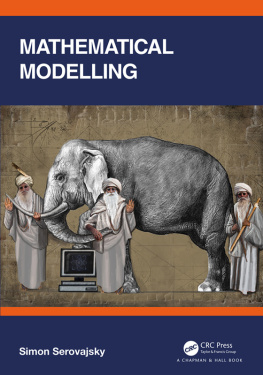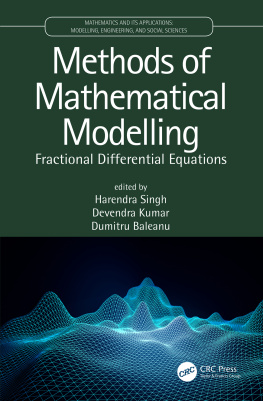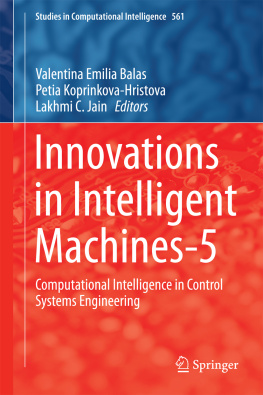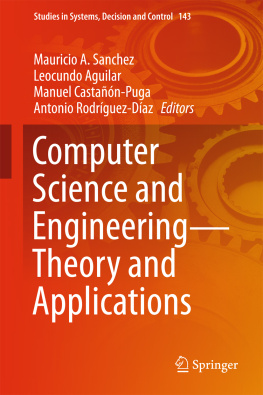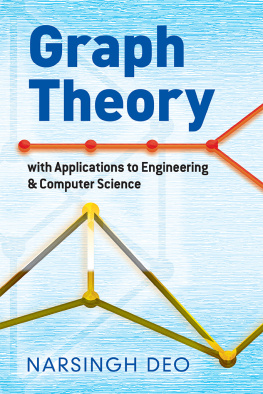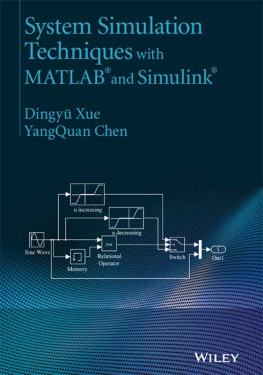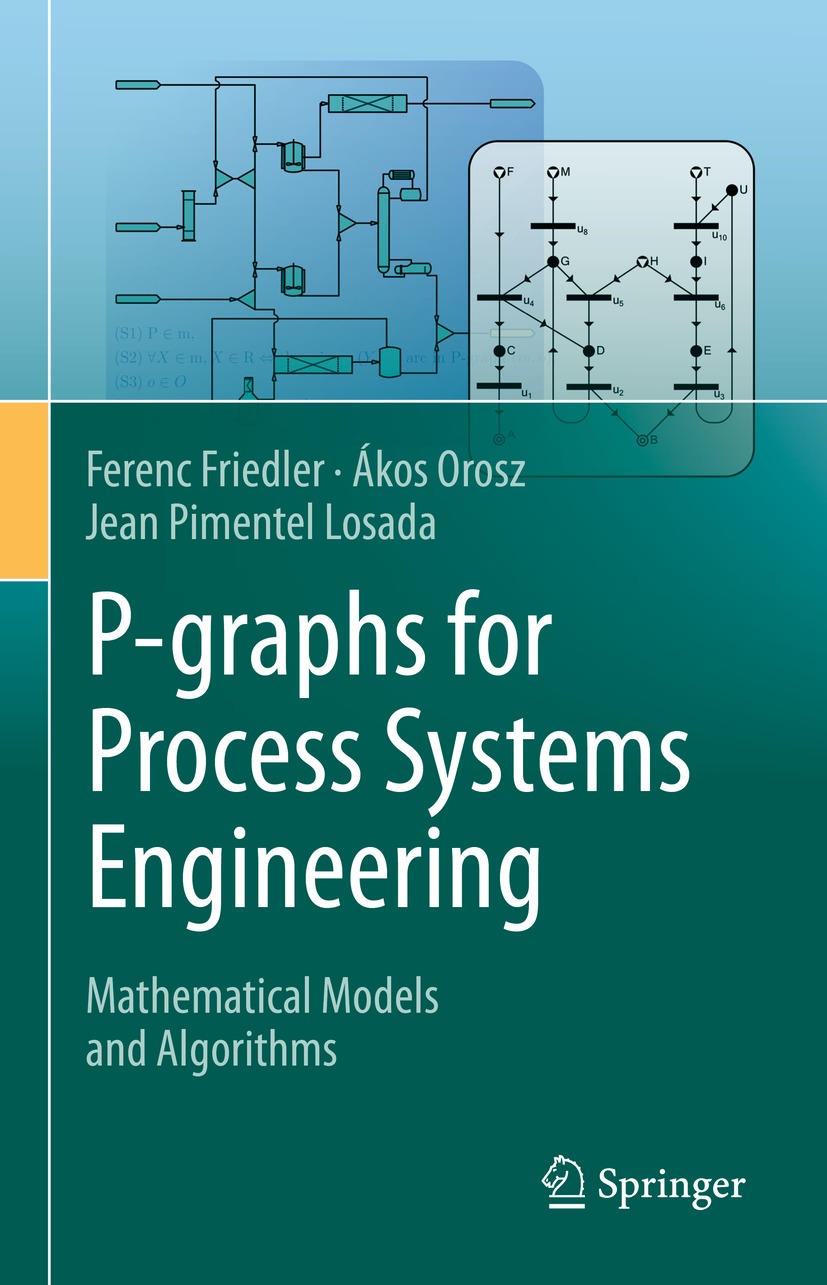Ferenc Friedler
Szchenyi Istvn University, Gyr, Hungary
kos Orosz
University of Pannonia, Veszprm, Hungary
Jean Pimentel Losada
Budapest University of Technology and Economics, Budapest, Hungary
ISBN 978-3-030-92215-3 e-ISBN 978-3-030-92216-0
https://doi.org/10.1007/978-3-030-92216-0
The Editor(s) (if applicable) and The Author(s), under exclusive license to Springer Nature Switzerland AG 2022
This work is subject to copyright. All rights are solely and exclusively licensed by the Publisher, whether the whole or part of the material is concerned, specifically the rights of translation, reprinting, reuse of illustrations, recitation, broadcasting, reproduction on microfilms or in any other physical way, and transmission or information storage and retrieval, electronic adaptation, computer software, or by similar or dissimilar methodology now known or hereafter developed.
The use of general descriptive names, registered names, trademarks, service marks, etc. in this publication does not imply, even in the absence of a specific statement, that such names are exempt from the relevant protective laws and regulations and therefore free for general use.
The publisher, the authors and the editors are safe to assume that the advice and information in this book are believed to be true and accurate at the date of publication. Neither the publisher nor the authors or the editors give a warranty, expressed or implied, with respect to the material contained herein or for any errors or omissions that may have been made. The publisher remains neutral with regard to jurisdictional claims in published maps and institutional affiliations.
This Springer imprint is published by the registered company Springer Nature Switzerland AG
The registered company address is: Gewerbestrasse 11, 6330 Cham, Switzerland
Preface
As a consequence of our ever-increasing need for higher efficiency and better sustainability, the world is going through rapid and significant changes. Naturally, the goals concerning efficiency and sustainability define proper ambition and target for both short and long term. Going in this direction is progressive; however, it requires a higher level of exploitation and better use of the potential resources available locally or globally. This can, however, be realized with additional interconnections among the already complex network of subsystems, i.e., with a higher-level integration. Because of that, the difficulties of our time very much differ from those of decades ago. The gradually better quality of life afforded by recent developments comes together with a major influence on our everyday routine. In the old days, a local catastrophe occurring to an independent system had essentially no direct influence on its surroundings. In contrast, a local catastrophe nowadays may become regional, or in some cases global, due to the high integration of systems. For instance, an accidental cut-off in an electric transmission network may induce a continental-level catastrophe. It is, therefore, crucial that further improvement of the already highly interconnected systems be made by considering their resilience , controllability, and operability in addition to the general requirements of efficiency and sustainability. To do so, however, the appropriate knowledge of complex systems is needed.
Currently, main research efforts are aimed at understanding the behavior of two types of complex networks; the difference between them relates to the types of mathematical models for describing the individual nodes of the networks. In one type of complex networks, simple mathematical models describe the nodes, e.g., the Internet. In the other type, complex mathematical models represent the networks nodes. The scope of our work belongs to the second type of complex networks which is closely related to a variety of engineering systems, including the chemical industry, production systems, and supply chains. The difficulty in examining this type of systems lies in both the size of the network, in terms of the number of nodes, and the complex mathematical models of the nodes. Because of the fundamental difference between the two types of complex networks, the research achievements of one of them can hardly be beneficial to the other type. The examination of the second type of complex networks belongs to the area of process systems engineering (PSE) where the complex systems are called complex processing systems, or simply, processing systems. The latter terminology will be used here.
The need for the systematic design and operation of processing systems originated in the petroleum industry back in the 1970s. That time saw the beginning of the creation of simulation programs for analyzing the expected behavior of a processing system prior to its construction. These simulation programs have become highly sophisticated, and by now, they are capable of optimizing large processing systems of a given network structure; nevertheless, they are incapable of systematically optimizing the network connections. Because of that, the question of how to connect the systems elements to each other, i.e., what the best network of the individual elements is, cannot be answered by such tools. In other words, they are incapable of the systematic synthesis of complex engineering networks.
Other types of approaches for the synthesis of processing systems are based on the optimization of a mathematical model. The key point in developing the mathematical model of processing systems synthesis, however, is to establish an exact relationship between the real problem and its mathematical model. This is extremely crucial, and also difficult, because the mathematical model of a synthesis problem is not the description of a real object, it is an artificial entity. Therefore, this models behavior cannot be compared with any real object for verification. The philosophical and practical consequences of this issue will be one of the main focuses of the book. It has to be emphasized that process design based on simulation programs and process synthesis based on mathematical optimization have major contributions to the development of industry, but still, fundamental questions must be answered to satisfy future needs.
With this work, our purpose is to provide a theory of systems by focusing on processing systems, i.e., networks, whose nodes are represented by complex mathematical models. This theory has been constructed on a unique reformulation of network synthesis that can simply be referred to as inside-out modeling of systems. A set of axioms of process structures is the basis of the theory, where the axioms are the expressions of the fundamental structural knowledge embedded into feasible networks. This axiomatic setup serves both the rigor and the long-term development of the theory. A framework formulated on this theory, called the P-graph framework , provides new methods for synthesizing complex systems by taking into account recently identified requirements on resilience , reliability , and controllability. The framework was originally developed for processing systems in the chemical industry; however, its application area now spans a wide range of engineering systems from reaction engineering to supply chain management.

